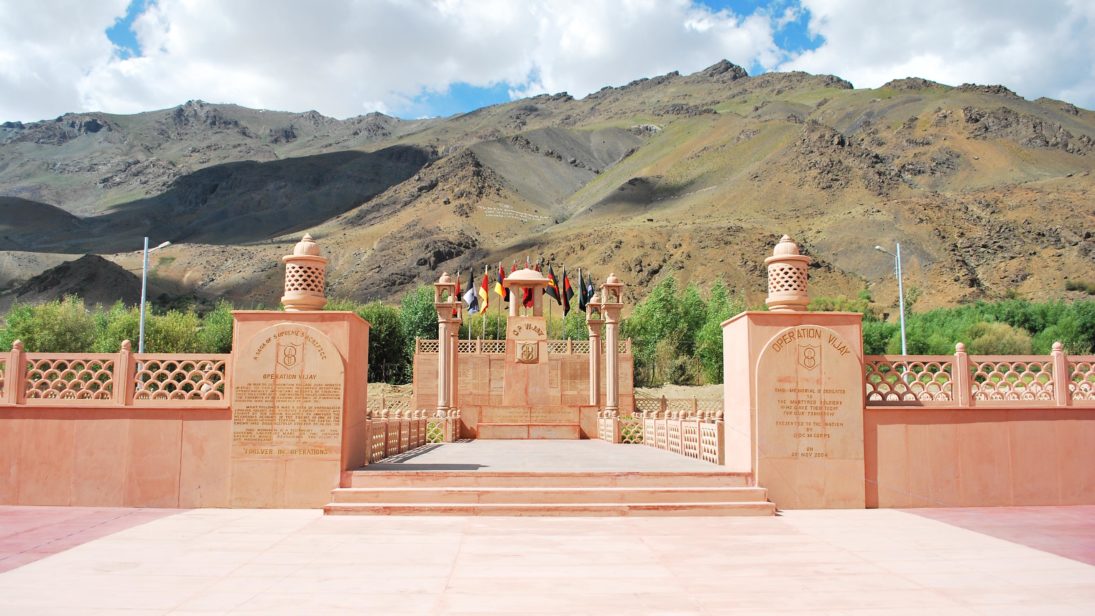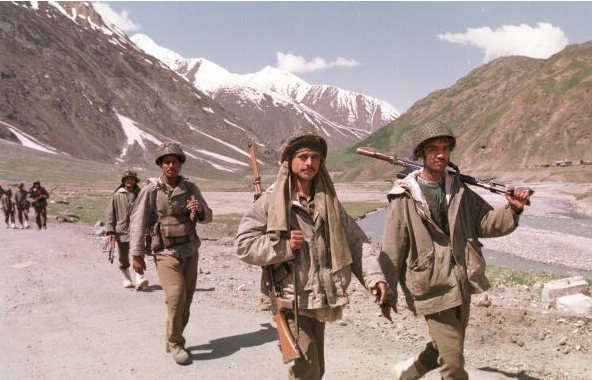
The summer of 1999 saw troops of two nuclear-armed states, India and Pakistan, fighting on the peaks of the Kargil district of Jammu and Kashmir, located some 200 kilometers away from Srinagar, facing the Pakistani-administered Northern Areas. Nearly twenty years later, Kargil continues to engender a lot of scholarly interest. Evidence from the conflict suggests that while the fear of nuclear escalation brought about third-party intervention, the possession of nuclear weapons did not embolden Pakistan to launch Operation Kargil.
The Kargil conflict is an instructive precedent with regards to how the fear of a nuclear exchange is bound to draw third parties to play a management role in future crises. Unlike Kargil, however, the evolving nature of nuclear South Asia dictates that third parties will face more challenges in managing crises in the future than they did in 1999. For this reason, the United States must begin to place a premium on crisis prevention over crisis management and escalation control.
Impetus for Operation Kargil
The initiation of the Kargil conflict was a Pakistani countermove intended to seize territory it had previously controlled in the Siachen Glacier. The months-long conflict witnessed the induction of artillery and air force by India after Pakistan threatened to cut off India’s strategic nerve: National Highway-1 (NH-1), which was not only India’s supply route to Siachen but also the linkage between Ladakh and Kashmir. The antecedents of the Kargil conflict can be traced back to 1984’s Operation Meghdoot, in which India took control of the Siachen Glacier. Along with two other factors, it was Islamabad’s urge to wrest back the 78 kilometer-long glacier that led its military to target NH-1.
The United States must begin to place a premium on crisis prevention over crisis management and escalation control.
The first additional factor that compelled Pakistan to launch Operation Kargil, or Operation Koh Paima, was the recalcitrant position taken by India over the Kashmir issue. Delhi considered Kashmir integral to its territory and rejected international mediation due to Islamabad’s alleged involvement in cross-border terrorism. Moeed Yusuf, in Brokering Peace in Nuclear Environments, suggests that the rationale behind the Kargil operation was to bring Kashmir into the international limelight, placing pressure on India—preferably through a third party—to talk about the core issue of Kashmir.
A second factor was the action-reaction cycle that often defines India-Pakistan relations. Indeed, Pakistan’s Operation Kargil was a mirror of India’s own actions during the Siachen conflict in 1984. In From Kargil to the Coup, Nasim Zehra reveals that even Indian Defense Minister George Fernandes acknowledged that the precedent of India and Pakistan leaving their positions along the Line of Control (LoC) in the winter “could only last until one day someone, i.e. Pakistan, decided to cheat against the ground rules…as India too had done in 1984 when it occupied Siachen.”
Nuclear Weapons and the Kargil Conflict: A Tenuous Connection
While nuclear weapons may not have influenced Pakistan’s military actions in Kargil, their presence certainly compelled the United States to engage in robust mediation.
Since the Kargil conflict took place almost a year after the two-way nuclearization of South Asia in 1998, many scholars and analysts assert that the insurance of nuclear weapons against an all-out war emboldened Rawalpindi to venture into Kargil. Despite the conventional wisdom on the Kargil conflict, there is no evidence to suggest that nuclear weapons ever came into the thought process of the four commanders involved in launching the Kargil operation, General Pervez Musharraf, Lt. Gen Aziz, Lt. Gen Mehmood and Maj. Gen Javed Hasan. They implemented a decades-old plan based on conventional military logic. The plan envisaged taking advantage of gaps in defenses and adverse weather during winters, in a bid to occupy dominating features overlooking NH-1. With Kargil chosen as the focal area of the operation, the plan was similar to the ones previously presented to the military and civilian leaderships. The fact that the operational-level planning was not influenced by a nuclear factor reveals that the ultimate weapon most likely did not affect the decision to launch Operation Koh Paima.
Pakistan’s military high command did not anticipate India’s response that centered around the use of Bofors guns and the induction of airpower in its Operation Vijay. This was not because of nuclear deterrence, but because it was believed that Indian troop movement would be impeded by the blockade of NH-1, something that was reiterated by General Musharraf in an interview in 2017. It is observable that General Musharraf has never discussed nuclear deterrence while talking about Kargil. Thus, it appears that the theater-level operation was influenced primarily by non-nuclear factors.
Escalation Control and Third-Party Intervention
While nuclear weapons may not have influenced Pakistan’s military actions in Kargil, their presence certainly compelled the United States to engage in robust mediation. U.S. apprehensions regarding escalation to the nuclear level were expressed by General Anthony Zinni during his meeting with General Musharraf in which he warned, “If you don’t pull out back, you are going to bring war and nuclear annihilation down your own country. That’s going to be very bad news for everybody.” According to Yusuf, Washington during Kargil prioritized de-escalation above all else. For this reason, Pakistan was warned privately and publicly to withdraw from the posts it had occupied, while India was implored to calibrate its use of force. In his book Call to Honour: In Service of Emerging India, Jaswant Singh reveals that the United States did not succumb to Indian demands of completely isolating Pakistan, but aimed to provide Pakistani Prime Minister Nawaz Sharif a face-saving way to withdraw from Kargil.

Lessons Learned for Future Crises
The Kargil episode gives a worrisome lesson: nuclear weapons may not deter the onset of low-intensity conflicts. However, it is important to enunciate that the dynamics of any future crisis between the two South Asian rivals will be vastly different from those that were witnessed in Kargil. While nuclear deterrence did not stop the crisis from occurring, it certainly played an indirect role in escalation management by way of ensuring a U.S. role as a third-party manager.
Given the fears of nuclear escalation that were present in U.S. thinking during Kargil, if the threat of nuclear escalation is imminent, one can be sure that the United States will be vigorously involved in crisis management. However, at this point in India and Pakistan’s shared history, the task of crisis management for the United States would be herculean. Nuclear weapons will play a greater role in future crises – especially in their escalation management – than they did in Kargil. Unlike during the Kargil operation, both countries have evolved as dynamic nuclear powers; they have assimilated the nuances of nuclear strategy into their military strategies.
The problem for third parties becomes apparent when one assesses the interplay of crisis management and nuclear deterrence. Certainly, the rapidity with which India’s Cold Start Doctrine can breach Pakistan’s nuclear threshold means that Islamabad may launch its India-centric tactical nuclear weapons (TNWs) early on in a crisis. Indeed, the problem amplifies because Indian military leadership has expressed its willingness to use military force against Pakistan despite its nuclear deterrent. While the magnitude of the Kargil conflict afforded the United States or other third parties time to calibrate its diplomacy, a fight near major Pakistani cities like Lahore would not. The Kargil conflict got off to a quiet start; the clash of India’s Integrated Battle Groups (IBGs) and Pakistani conventional and nuclear forces would be destructive from the very beginning. This gives the United States – or any other third party – less time to mediate before the crisis reaches a higher rung.
Once a crisis arises despite the presence of nuclear deterrence, its escalation will be managed both by deterrence and the efforts of the third party. If deterrence becomes unstable or the crisis escalates rapidly to the nuclear level, the efforts of the crisis manager may be for naught.
Since third parties will face more challenges in managing crises in the future than they did during the Kargil conflict, the United States must prioritize crisis prevention instead of crisis management and escalation control. Once a crisis arises despite the presence of nuclear deterrence, its escalation will be managed both by deterrence and the efforts of the third party. If deterrence becomes unstable or the crisis escalates rapidly to the nuclear level, the efforts of the crisis manager may be for naught. For this reason, as long as core issues between Delhi and Islamabad are not resolved, the potential for Kargil-like episodes will continue to jeopardize peace in South Asia in the future.
***
Image 1: Kamaljith K V via Flickr
Image 2: Vijay Gupta via Getty


